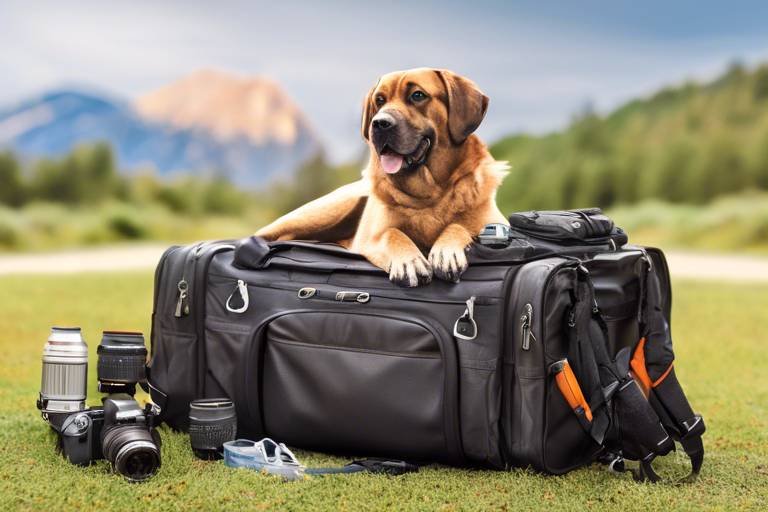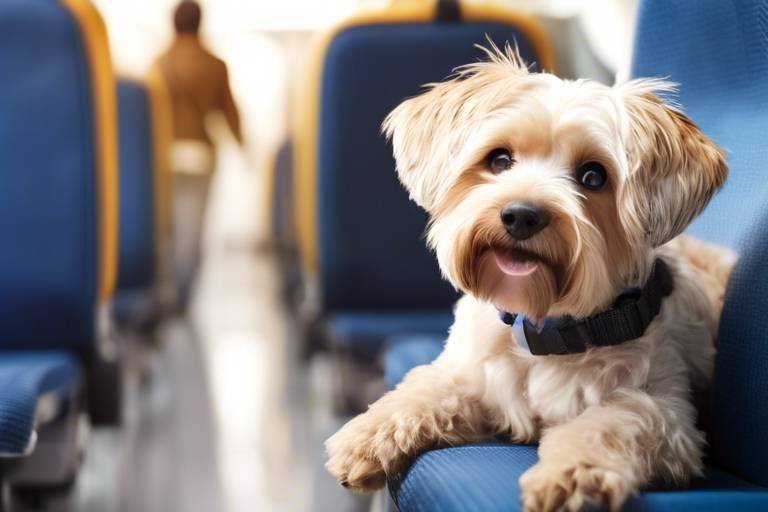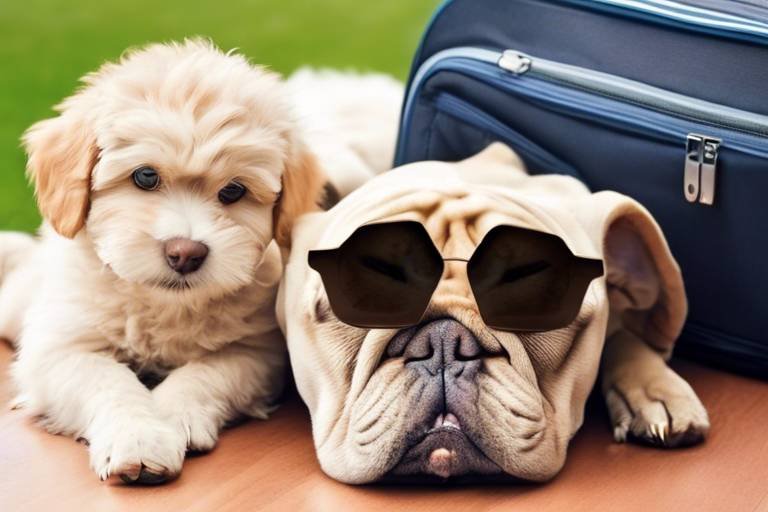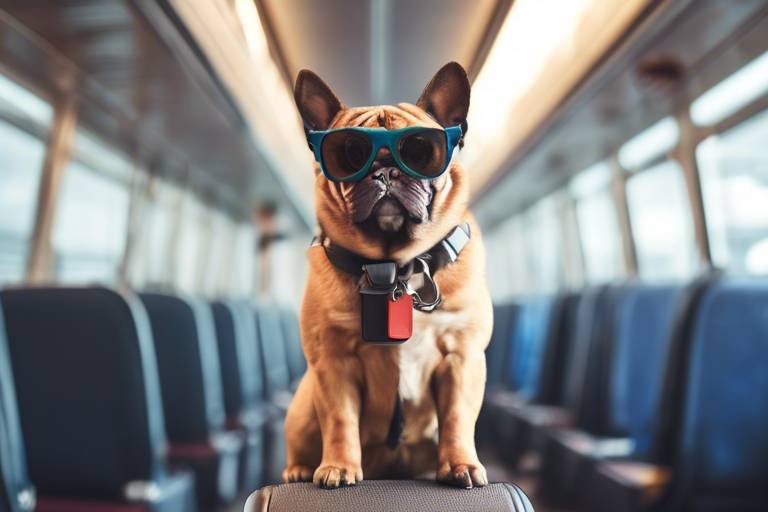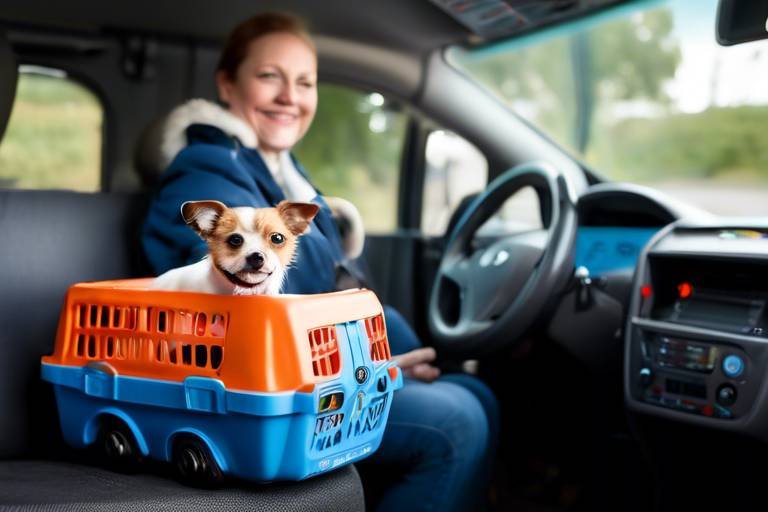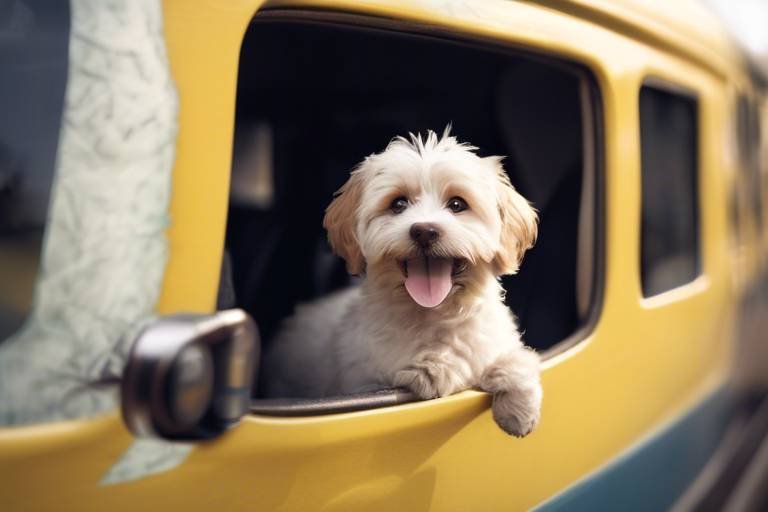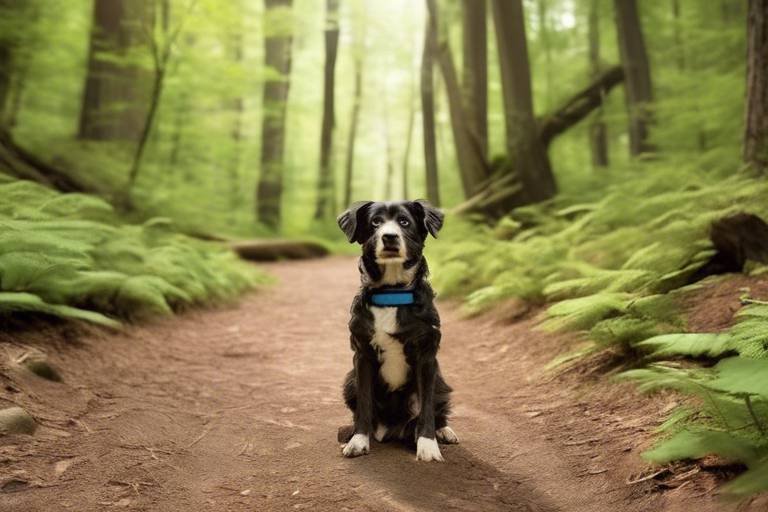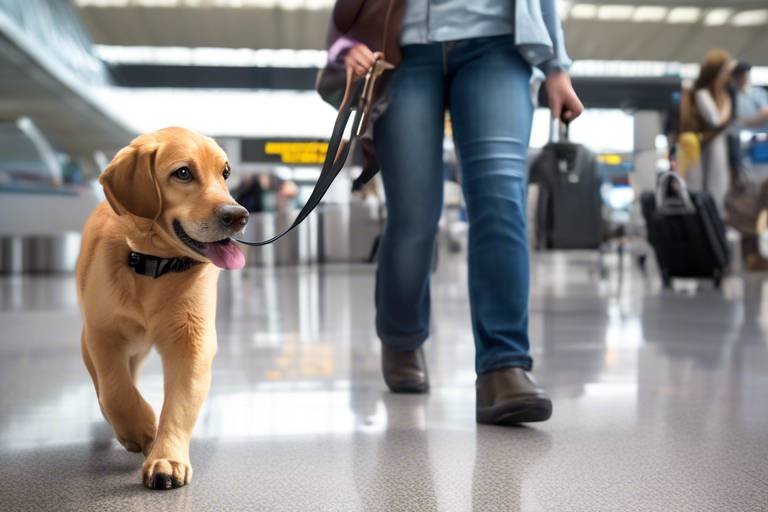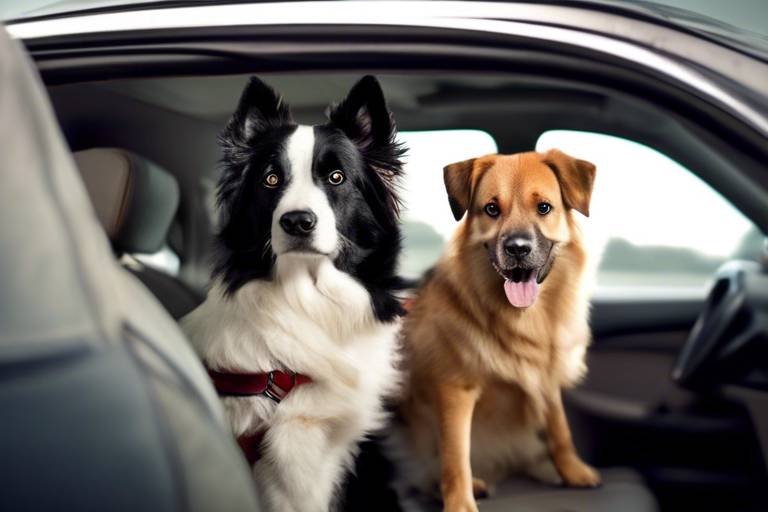The Best Travel Strategies for Pet Owners
Traveling with pets can often feel like a daunting task, but it doesn't have to be! With the right strategies in place, you can ensure that both you and your furry companions enjoy a stress-free adventure. Whether you’re planning a weekend getaway or a long vacation, it’s essential to prioritize your pet's comfort and safety. After all, pets are family too, and they deserve to experience the joy of travel alongside you. In this article, we explore effective travel strategies for pet owners, covering everything from choosing the right accommodations to preparing your pet for the journey ahead.
Finding the right place to stay is crucial for a stress-free trip. Imagine arriving at a beautiful destination only to find out that your beloved pet isn't welcome! To avoid this disappointment, it’s important to do your homework. Start by searching for accommodations that explicitly advertise themselves as pet-friendly. Websites like PetsWelcome and Airbnb can be great resources. Look for places that offer amenities like pet beds, food bowls, and even dog parks nearby. Don’t forget to read reviews from other pet owners to get a sense of how accommodating the staff is. Remember, a happy pet makes for a happy trip!
Preparation is key to ensuring your pet travels comfortably. Just like humans, pets need time to adjust to the idea of traveling. Start by acclimating your pet to their travel carrier. Leave it open in your home, allowing them to explore it and even take naps inside. This will help them associate the carrier with positive experiences. Packing their essentials is also crucial. Make a checklist of items to bring, such as:
- Food and water bowls
- Leashes and harnesses
- Favorite toys and blankets
- Medications (if any)
- Waste bags
Familiarizing your pet with the mode of transportation is another important step. If you’re traveling by car, take them on short drives leading up to your trip to help them get used to the motion. For air travel, consider visiting the airport beforehand to let them experience the hustle and bustle of the environment.
Before traveling, ensure your pet is healthy and up-to-date on vaccinations. A visit to the vet is a must! Not only will they check for any health issues, but they can also provide you with the necessary paperwork that may be required for travel. Different states and countries have various regulations regarding pet travel, so it’s essential to be informed. Ask your vet about any specific vaccinations your pet may need based on your travel destination.
Consider investing in travel insurance for your pet. Just like you wouldn’t travel without health insurance, your furry friend deserves the same protection. Travel insurance can cover unexpected medical expenses, lost luggage, or even trip cancellations due to your pet’s health issues. When looking for a policy, ensure it includes coverage for emergencies while traveling, as well as any pre-existing conditions your pet may have. It's always better to be safe than sorry!
In case of separation during travel, microchipping your pet is vital. This small procedure can make a world of difference if your pet gets lost. Ensure your pet wears a collar with an ID tag that includes your contact information. It’s also a good idea to have a recent photo of your pet on hand, just in case you need to post flyers or share on social media. Remember, being proactive can save you a lot of heartache!
Car trips can be enjoyable for pets when done right. Just like you wouldn’t drive without a seatbelt, your pet should be secured in the vehicle. Use a pet seatbelt, carrier, or a pet barrier to keep them safe during the ride. Make frequent stops for breaks, allowing your pet to stretch their legs and relieve themselves. Always keep water handy to keep them hydrated, especially on warm days. And never leave your pet alone in a parked car, as temperatures can rise quickly!
Flying with pets requires special considerations. Before booking your flight, check the airline's pet policy. Some airlines allow pets in the cabin, while others may require them to travel in cargo. If your pet is flying in the cabin, ensure they are crate-trained and comfortable in their carrier. It’s also wise to book a direct flight to minimize the stress of layovers. Preparing your pet for the airport experience can make a huge difference.
Navigating airport security can be stressful, but with a little planning, you can streamline the process. When you arrive at security, you may need to take your pet out of their carrier. Have a leash handy to keep them secure. It’s also a good idea to familiarize your pet with the carrier beforehand, so they feel comfortable when it’s time to go through the scanner. Patience is key; remember, your pet can sense your anxiety, so stay calm and reassuring.
Keeping your pet comfortable during the flight is essential. Bring along their favorite blanket or toy to provide comfort and familiarity. If your pet tends to get anxious, consult your veterinarian about calming aids or medications that may help. During the flight, check on your pet regularly and offer treats or toys to keep them occupied. A little extra attention can go a long way in ensuring a pleasant journey for both of you!
1. Can I take my pet on a plane with me?
Yes, many airlines allow pets to travel in the cabin, but it depends on the airline's specific policies. Always check before booking your flight.
2. How do I prepare my pet for a long road trip?
Start by taking your pet on shorter drives to get them used to the car. Make sure to pack their essentials and take frequent breaks during the trip.
3. What should I do if my pet gets lost while traveling?
Ensure your pet is microchipped and has a collar with an ID tag. Having a recent photo of your pet can also help in case you need to share it on social media or post flyers.
4. Is travel insurance for pets worth it?
Absolutely! Travel insurance can cover unexpected medical expenses and provide peace of mind while traveling with your furry friend.
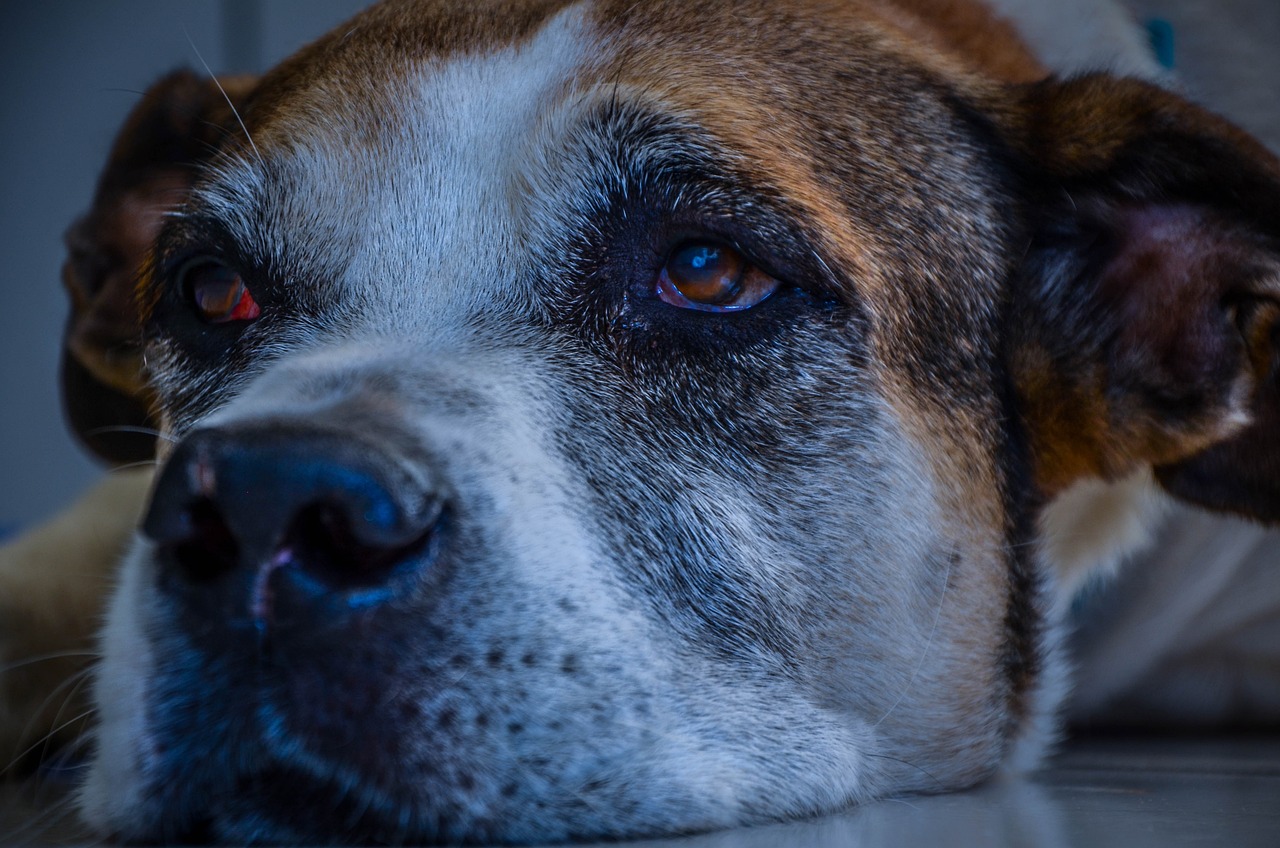
Choosing Pet-Friendly Accommodations
When it comes to traveling with your beloved furry companions, finding the right place to stay can make all the difference. Imagine arriving at your destination after a long journey, only to find that your hotel or rental property isn’t welcoming to pets. The stress of such a situation can overshadow the excitement of your trip. Therefore, should be at the top of your travel checklist. But how do you ensure that the place you book is truly pet-friendly and not just a marketing gimmick?
First, it’s important to conduct thorough research. Look for accommodations that specifically advertise themselves as pet-friendly. Websites like BringFido and PetsWelcome are fantastic resources that list hotels, motels, and vacation rentals that cater to pet owners. But don’t stop there! Always read the reviews from other pet owners. These testimonials can provide invaluable insights into the actual experiences of other travelers and can help you avoid places that might have hidden fees or restrictions.
Next, consider the amenities offered. Some accommodations go above and beyond by providing pet beds, bowls, and even treats. Others may have designated pet areas or walking paths, which can make your stay much more enjoyable. When booking, it’s a good idea to ask questions like:
- Are there any breed restrictions?
- What is the pet fee, and is it a one-time charge or a nightly fee?
- Are there any specific rules regarding pets in common areas?
Another crucial aspect to consider is the location. Look for places that are near parks, beaches, or other pet-friendly attractions. This not only enhances your pet's experience but also allows you to explore the area together. Imagine taking a leisurely stroll through a local park or enjoying a day at a pet-friendly beach—these experiences can create lasting memories for both you and your pet.
Don’t forget to check the policies regarding pet size and number. Some places may have restrictions on how many pets you can bring or what size is acceptable. If you have multiple pets or a larger breed, make sure to clarify these details before booking to avoid any surprises upon arrival.
Lastly, consider alternatives to traditional hotels. Platforms like Airbnb and Vrbo often have listings that allow pets and can provide a more home-like environment. This can be particularly beneficial if you’re traveling with a larger group or need more space. Just remember to communicate with the host about your pet before booking to ensure a smooth experience.
In summary, choosing the right pet-friendly accommodation is all about doing your homework. By researching, asking the right questions, and considering your pet’s needs, you can ensure that your stay is enjoyable for both you and your furry friend. After all, a happy pet means a happy vacation!
1. How can I find pet-friendly accommodations?
You can use specialized websites like BringFido and PetsWelcome to find listings that cater to pet owners. Always read reviews to get a sense of other travelers' experiences.
2. Are there usually extra fees for bringing pets?
Many accommodations charge a pet fee, which can either be a one-time charge or a nightly fee. Always inquire about this before booking.
3. Can I bring multiple pets?
This depends on the accommodation's policy. Some places have restrictions on the number of pets allowed, so it's best to check beforehand.
4. What should I do if my pet has special needs?
If your pet requires special accommodations, such as a specific diet or medication, communicate this with the host or hotel staff in advance to ensure they can meet your needs.

Preparing Your Pet for Travel
Traveling with your pet can be one of the most rewarding experiences, but it requires some thoughtful preparation to ensure both you and your furry friend have a great time. First things first, acclimatization is key. Just like humans, pets can feel anxious about new environments. Start by taking your pet on short car rides to help them get used to the motion and sounds. This gradual exposure can make a world of difference when it's time for the big trip.
Next, consider packing a travel bag just for your pet. This bag should include all the essentials to keep your pet comfortable and happy during your journey. Here’s a quick checklist of items to include:
- Food and Water: Bring enough of their regular food to last the trip and a portable water bowl.
- Leash and Collar: Ensure their collar has an ID tag with your contact information.
- Comfort Items: A favorite blanket or toy can provide comfort in unfamiliar places.
- Grooming Supplies: Keep your pet looking sharp and feeling fresh.
- First Aid Kit: Include basic supplies to handle minor injuries or ailments.
Familiarizing your pet with the mode of transportation you'll be using is also crucial. If you're traveling by car, let them explore the vehicle beforehand. If flying, consider taking them to the airport for a quick visit to help them get accustomed to the sights and sounds. This can make the actual travel day feel less overwhelming.
Before you embark on your adventure, it's essential to schedule a visit to the vet. Ensure your pet is healthy and up-to-date on all vaccinations. Some destinations may require specific vaccinations or health certificates, so it's wise to check these requirements ahead of time. This visit also provides an opportunity to discuss any concerns you might have about traveling with your pet. Your vet can offer invaluable advice tailored to your pet's needs.
Have you ever thought about what would happen if your pet fell ill or got injured while you were away? This is where travel insurance for pets comes into play. Investing in a good policy can provide peace of mind during your travels. Look for coverage that includes emergency medical treatment, trip cancellation, and lost pet recovery. It’s a small price to pay for the comfort of knowing your furry friend is protected.
One of the most important steps you can take to ensure your pet's safety while traveling is to have them microchipped. In the unfortunate event that you become separated, a microchip can be a lifesaver. Alongside microchipping, make sure your pet wears a collar with a clear ID tag. This should include your contact information. You can never be too cautious, and having these measures in place can make all the difference.
In summary, preparing your pet for travel involves a combination of acclimatization, packing the right essentials, ensuring their health, and taking safety precautions. With the right preparation, you can turn a potentially stressful journey into a delightful adventure for both you and your pet.
Q: What should I do if my pet gets anxious during travel?
A: If your pet is prone to anxiety, consider consulting your vet for advice on calming aids or travel medications. Additionally, bringing along their favorite toys or blankets can provide comfort.
Q: Are there specific airlines that are more pet-friendly?
A: Yes, some airlines have better reputations for pet travel. Always check their pet policies and read reviews from other pet owners before booking your flight.
Q: Can I take my pet out of the carrier during the flight?
A: Generally, pets must remain in their carriers during the flight, especially in the cabin. However, each airline has different rules, so it's best to check in advance.
Q: What if my pet needs to go to the bathroom during a long car ride?
A: Plan for regular stops every couple of hours to allow your pet to stretch their legs and relieve themselves. Always keep a leash handy for these breaks.
Health Check and Vaccinations
Before embarking on any travel adventure with your beloved pet, it's absolutely essential to ensure they are in tip-top shape. Just like you wouldn’t hit the road without checking your car’s oil and tires, you shouldn’t travel with your furry friend without a thorough health check. A visit to the veterinarian is not just a formality; it's a crucial step that can prevent potential health issues during your trip. During this visit, you should discuss any pre-existing conditions your pet may have and ensure they are fit for travel.
Additionally, keeping your pet's vaccinations up-to-date is vital. Different regions may have varying health risks, and your pet could be exposed to unfamiliar pathogens. Common vaccinations to consider include rabies, distemper, and Bordetella, among others. It’s wise to consult your vet about which vaccinations are necessary based on your travel destination. They might even provide you with a vaccination record, which is often required by hotels or airlines, and can be a lifesaver in case of emergencies.
To give you a clearer picture, here’s a quick table summarizing some of the key vaccinations and their importance:
| Vaccination | Importance |
|---|---|
| Rabies | Legally required in many areas; protects against a fatal virus. |
| Distemper | Prevents a highly contagious and often fatal disease. |
| Bordetella | Protects against kennel cough, especially important if your pet will be around other animals. |
| Lyme Disease | Recommended if traveling to tick-infested areas. |
Moreover, don't overlook the importance of having the right paperwork. Many airlines and accommodations require proof of vaccinations, so having these documents readily available can save you from a lot of headaches. It's also a good idea to keep a first-aid kit handy, stocked with essentials like bandages, antiseptic wipes, and any medications your pet may need. Think of it as your pet’s travel insurance, ensuring they have everything they need in case of minor mishaps.
In summary, a health check and vaccinations are not just about compliance; they are about ensuring your pet's safety and comfort during your travels. By taking these steps, you can travel with peace of mind, knowing that your furry companion is healthy and prepared for the adventure ahead. After all, a happy pet means a happy trip!
- How far in advance should I schedule a vet appointment?
It's best to schedule your vet appointment at least a few weeks before your trip to allow time for any necessary vaccinations and paperwork. - What should I do if my pet has a health issue?
If your pet has a health issue, consult your vet to discuss travel options and whether your pet is fit to travel. - Are there specific vaccinations required for international travel?
Yes, some countries have specific vaccination requirements, so check the regulations of your destination well in advance.
Travel Insurance for Pets
When embarking on an adventure with your furry friend, one of the most prudent steps you can take is to consider . Just like you would safeguard your own health and belongings during a trip, your pet deserves the same level of protection. Imagine the peace of mind knowing that if something unexpected happens—like a sudden illness or an accident—you have a safety net in place. But what exactly does pet travel insurance cover, and why is it essential?
First and foremost, pet travel insurance typically covers a variety of incidents that can occur while you’re on the road or in the air. This may include emergency veterinary care, trip cancellations due to your pet's health issues, and even coverage for lost or stolen pets. Think of it as a protective umbrella that shields you from the rain of unforeseen circumstances. Not only does this insurance provide financial relief, but it also allows you to focus on enjoying your trip rather than worrying about what might go wrong.
When choosing a policy, there are a few key factors to keep in mind. Look for coverage that includes:
- Emergency medical expenses: This ensures that if your pet gets sick or injured while traveling, you won’t be left scrambling to find funds for treatment.
- Trip interruption coverage: If you need to cut your trip short due to your pet's health, this can help recover some of the costs.
- Lost pet coverage: In the unfortunate event that your pet goes missing, this can assist with the costs of searching for them.
It’s also wise to read the fine print. Some policies might have exclusions or limitations that could affect your coverage. For instance, certain pre-existing conditions might not be covered, or there may be restrictions based on your pet’s breed or age. Therefore, it’s crucial to ask questions and clarify any doubts with your insurance provider.
Additionally, consider the convenience factor. Some providers offer 24/7 support, which can be invaluable when you’re traveling. Imagine being in a foreign country, and your pet suddenly falls ill. Having access to a hotline where you can get immediate advice can make all the difference. It’s like having a lifeline right at your fingertips!
Ultimately, investing in travel insurance for your pet is not just about financial protection; it’s also about ensuring a worry-free experience for both you and your furry companion. It allows you to travel with confidence, knowing that you’re prepared for whatever might come your way. So, before you pack your bags and hit the road, take a moment to explore your options for pet travel insurance. Your pet is worth it!
Here are some common questions pet owners have regarding travel insurance for their furry companions:
- Is travel insurance for pets expensive? - The cost can vary based on factors like your pet’s age, breed, and health history. However, considering the potential costs of emergencies, it can be a worthwhile investment.
- What if my pet has a pre-existing condition? - Many policies do not cover pre-existing conditions, so it’s important to disclose your pet’s medical history when applying.
- Can I get travel insurance for my pet if I’m traveling internationally? - Yes, many providers offer international coverage, but make sure to check the specifics of each policy.
Microchipping and Identification
When it comes to traveling with your furry friend, one of the most important steps you can take is ensuring they are properly identified. Imagine this: you’re in a bustling airport, your pet is excitedly wagging their tail, and suddenly, they slip out of their harness. Panic sets in, right? This is where microchipping comes into play. Unlike a collar and tag, which can easily fall off or be removed, a microchip is a tiny device implanted under your pet's skin that provides a permanent form of identification. It’s like giving your pet a little insurance policy against getting lost.
Microchips are not only beneficial for identifying your pet but also for reuniting you if you ever become separated. When a lost pet is found, shelters and veterinarians can scan the microchip and retrieve your contact information. This is a game-changer! According to the American Humane Association, microchipped pets are significantly more likely to be returned to their owners than those without.
But how does microchipping work? Here’s a simple breakdown:
| Step | Description |
|---|---|
| 1 | A veterinarian implants a microchip, which is about the size of a grain of rice, under your pet's skin. |
| 2 | The chip is registered with your contact information in a national database. |
| 3 | If your pet is lost and found, the microchip is scanned, and your information is retrieved, allowing for a quick reunion. |
Now, while microchipping is crucial, it’s also important to keep your contact information updated. If you move or change your phone number, make sure to update your details in the microchip registry. It’s a simple task that can make a world of difference.
In addition to microchipping, consider using a collar with an ID tag. This tag should include your pet's name, your name, and a phone number where you can be reached. It’s a good idea to have both forms of identification. Think of it as a backup plan; just like you wouldn’t leave home without your wallet, don’t leave home without your pet’s identification!
Lastly, never underestimate the importance of a good travel harness or crate. These not only keep your pet safe during travel but also provide them with a sense of security. It’s like giving them their own little safe space in the chaos of travel. So, before you embark on your adventure, ensure your pet is microchipped, wearing an ID tag, and secured in a comfortable travel setup. Trust me, it’s worth the peace of mind!
- What is a microchip? A microchip is a small device implanted under your pet's skin that provides a permanent form of identification.
- How does microchipping help? If your pet gets lost, shelters and vets can scan the chip to retrieve your contact information and reunite you with your pet.
- Is microchipping safe? Yes, microchipping is a quick and safe procedure performed by a veterinarian.
- Do I need to update my information? Absolutely! Always keep your contact information current in the microchip registry.
- Can I track my pet's location with a microchip? No, microchips do not provide GPS tracking; they are solely for identification purposes.
Traveling by Car with Pets
Traveling by car with your furry friend can be one of the most rewarding experiences, but it also comes with its own set of challenges. Think of it as a road trip buddy adventure—just you, your pet, and the open road ahead! However, to ensure that both you and your pet have a fun and safe journey, there are several essential tips to keep in mind. First and foremost, it’s crucial to secure your pet properly in the vehicle. Just like you wouldn’t want to drive without a seatbelt, your pet should be safely restrained to prevent distractions and injuries. Consider using a pet seatbelt, a travel crate, or a pet barrier to keep them safe while you navigate the roads.
Another important aspect of car travel is planning for frequent breaks. Just like humans, pets need to stretch their legs, hydrate, and relieve themselves during long trips. Aim to stop every couple of hours to let your pet out for a quick walk or some playtime. This not only helps them burn off some energy but also allows them to adjust to the travel environment. Make these stops fun! Let your pet explore a bit, sniff around, and enjoy the fresh air. It’s like a mini adventure in the middle of your journey!
When packing for your trip, don’t forget to bring along your pet’s essentials. Here’s a quick checklist of must-haves:
- Food and Water: Bring enough food for the duration of your trip, as well as a portable water bowl to keep them hydrated.
- Leash and Collar: Always have a leash handy for those pit stops, and ensure your pet’s collar has an ID tag with your contact information.
- Comfort Items: Familiar blankets or toys can help soothe your pet and make them feel at home in the car.
- First Aid Kit: A basic pet first aid kit can be a lifesaver in case of minor injuries.
Additionally, it’s wise to keep your pet’s health in mind. Make sure they are comfortable during the ride. If your pet is prone to motion sickness, consult your vet for possible remedies or strategies to ease their discomfort. Some pets may benefit from a light meal before the trip, while others might do better on an empty stomach. It's all about knowing your pet's habits and preferences.
Finally, never leave your pet alone in a parked car, especially in hot weather. Cars can heat up quickly, and even a few minutes can lead to heatstroke. Always prioritize your pet’s safety and comfort, and you’ll both be sure to enjoy the journey ahead!
1. How can I keep my dog calm during a long car ride?
To help your dog stay calm, consider bringing their favorite blanket or toy, playing soft music, or using calming sprays or treats recommended by your vet.
2. Is it safe to let my pet stick their head out of the window?
While it may look cute, it’s not safe! Debris can hit their eyes, and they can easily jump or fall out of the car. Always keep windows rolled up or only slightly open.
3. Should I feed my pet before a long car trip?
It depends on your pet. Some do well with a light meal before traveling, while others may get car sick. It’s best to experiment during shorter trips before a long journey.

Air Travel Considerations
Traveling by air with your beloved pet can feel like a daunting task, but with the right approach, it can be a smooth experience for both of you. First off, it’s essential to check the specific airline policies regarding pet travel. Each airline has different rules, fees, and requirements, and knowing these in advance can save you from unexpected surprises at the airport. Some airlines allow pets in the cabin, while others may require them to travel in the cargo hold. Ensure you understand the distinctions and choose the best option for your furry friend.
Next, crate training your pet is a crucial step in preparing for air travel. A comfortable and familiar crate can significantly reduce anxiety for your pet. Start the training process well in advance of your trip. Allow your pet to explore the crate at home, making it a cozy space with their favorite blanket or toy. This familiarity can help ease their nerves when it’s time to travel. Remember, the crate should be well-ventilated, secure, and large enough for your pet to stand, turn around, and lie down comfortably.
When it comes to heading to the airport, timing is everything. Arrive early to allow ample time for check-in and security procedures. This is particularly important if you’re traveling with a pet, as you may need to fill out additional paperwork or provide health certificates. Speaking of which, having all necessary documentation ready is vital. This includes proof of vaccinations, health certificates from your veterinarian, and any other required paperwork mandated by your airline or destination. It’s a good idea to keep these documents organized in a folder for easy access.
During the security checks, be prepared for some extra steps. You may need to take your pet out of the carrier while the carrier itself is screened separately. This can be a little stressful, so having a leash ready is crucial to keep your pet secure. Consider using a calming spray or a favorite toy to help soothe your pet during this potentially overwhelming experience.
Once you’re on the plane, keeping your pet comfortable is paramount. If your pet is traveling in the cabin, ensure they are settled in their crate under the seat in front of you. Bring along some water and a small bowl to keep them hydrated during the flight. If your pet is prone to anxiety, consult your vet about possible calming aids that can help ease their nerves during the journey. For pets traveling in the cargo hold, it’s essential to ensure the crate is properly secured and labeled. Consider adding a familiar blanket or a piece of your clothing to provide comfort.
In conclusion, while air travel with pets can be challenging, proper preparation can make the journey enjoyable for both you and your furry companion. From understanding airline policies to ensuring your pet’s comfort during the flight, these considerations will help you navigate the skies with confidence. Always remember that your pet relies on you for their safety and comfort, so take the time to plan ahead and make the experience as stress-free as possible.
- What documents do I need to travel with my pet? You will need a health certificate, vaccination records, and any other paperwork required by the airline or your destination.
- Can I bring my pet in the cabin? Many airlines allow pets in the cabin, but there are specific size and weight limits. Check with your airline for their specific policies.
- How can I help my pet cope with anxiety during the flight? Consider using calming sprays, bringing familiar toys, and keeping their crate comfortable with blankets to ease their stress.
Preparing for Security Checks
Traveling with your furry friend can be an exhilarating experience, but navigating airport security can feel like a daunting task. It’s essential to prepare not only yourself but also your pet for the hustle and bustle of security checks. First and foremost, make sure you arrive at the airport with plenty of time to spare. You never know how long the lines might be, and the last thing you want is to rush through the process, which could heighten your pet's anxiety.
Before you even step foot in the airport, it’s wise to familiarize yourself with the specific airline policies regarding pet travel. Each airline has its own set of rules, especially concerning security procedures. Most airlines require pets to be in a carrier that meets specific size requirements, so double-check that your carrier is compliant. Additionally, ensure that your pet is comfortable in their carrier before the trip. You might want to allow them to explore it at home, making it feel like a safe space rather than a confinement.
When you reach the security checkpoint, you will need to take your pet out of their carrier. This is where it gets a bit tricky; pets often feel anxious in unfamiliar environments. To ease their nerves, consider using a harness and leash rather than just holding them in your arms. This way, if they get startled, you have a secure hold on them. Remember, pets can sense your emotions, so staying calm and reassuring can make a world of difference. If your pet is particularly skittish, you might want to consult your vet about possible calming aids.
As you approach the security screening area, you’ll be asked to place your pet in a designated area while you walk through the metal detector. This can be stressful, so it's crucial to keep your pet close to you, reassuring them with your voice. Many airports now have pet-friendly security procedures, so ask the staff if they can accommodate your needs. Preparation is key here; knowing what to expect can transform a potentially chaotic situation into a manageable one.
Once you've made it through security, don't forget to check your pet's carrier. Ensure that they are comfortable and have enough ventilation. You may also want to pack some of their favorite toys or a blanket to keep them calm during the flight. Remember, a little preparation goes a long way in making the airport experience smoother for both you and your pet.
In summary, preparing for security checks involves understanding airline policies, ensuring your pet is comfortable in their carrier, and staying calm throughout the process. By taking these steps, you can help ensure that your journey is as pleasant as possible for both you and your furry companion.
- What should I do if my pet is anxious during the security process? Consider using a calming spray or consult your vet for anxiety medication. Keeping your voice calm and offering treats can also help.
- Can I take my pet through security in a carrier? Yes, but you will need to remove your pet from the carrier for security screening.
- What if my pet is too large to fit in a carrier? Larger pets may need to travel in a designated cargo area, and you should check with your airline for their specific requirements.
In-Flight Comfort Tips
When it comes to flying with your furry friend, ensuring their comfort is paramount. Just like us, pets can feel anxious and uncomfortable during flights, which can lead to a stressful experience for both of you. To help alleviate some of that anxiety and keep your pet feeling cozy, here are some essential tips to consider.
First and foremost, familiarize your pet with their travel crate. Before the trip, allow your pet to explore and spend time in their crate at home. This helps them associate the crate with a safe space rather than a confinement. You can even place their favorite blanket or toy inside to make it feel more inviting. The more comfortable they are with their crate, the less stressed they will be during the flight.
Next, consider the timing of your flight. If possible, book flights during times when your pet is naturally more relaxed. For instance, if your dog usually takes a nap in the afternoon, a mid-day flight might be ideal. This way, they can snooze through a good portion of the journey, minimizing their anxiety and discomfort.
When it comes to food and water, be mindful of what and when you feed your pet. It’s best to avoid feeding them a large meal right before the flight to prevent any motion sickness. Instead, offer a light meal a few hours before departure. Additionally, bringing a collapsible water bowl can help keep your pet hydrated during the flight. Remember to offer water during layovers or when allowed, as staying hydrated is crucial.
Another essential tip is to keep your pet calm during the flight. You might want to consider using calming aids, such as pheromone sprays or anxiety wraps, which can provide comfort to anxious pets. Always consult your veterinarian before using any medication or calming product, as they can recommend the best options for your specific pet.
Don’t forget about in-flight entertainment! Just like we enjoy our favorite music or movies, pets can benefit from distractions too. Bring along a few of their favorite toys or chew items to keep them occupied. A new toy can also serve as an excellent distraction, helping to divert their attention from the unfamiliar sounds and sensations of flying.
Lastly, stay calm yourself. Pets are incredibly perceptive and can pick up on their owner's emotions. If you’re anxious, your pet may feel that way too. Take deep breaths, speak softly to your pet, and reassure them that everything is okay. Your calm demeanor can work wonders in helping them feel secure.
By following these in-flight comfort tips, you can help ensure that your pet has a pleasant flying experience. Remember, a little preparation goes a long way in making your journey enjoyable for both you and your furry companion.
- Can I take my pet in the cabin with me?
Many airlines allow small pets in the cabin, but you must check their specific policies and book in advance. - What should I do if my pet gets anxious during the flight?
Consider calming aids, and consult your vet for recommendations on medications or strategies to help soothe your pet. - How can I prepare my pet for air travel?
Familiarize them with their travel crate, keep their routine consistent, and practice short car trips to help them adjust.
Frequently Asked Questions
- What should I consider when choosing pet-friendly accommodations?
When selecting a place to stay, look for hotels or rentals that specifically advertise as pet-friendly. Check their policies on pet size, breed restrictions, and additional fees. It's also wise to read reviews from other pet owners to ensure the accommodation meets your expectations and provides a welcoming environment for your furry friend.
- How can I prepare my pet for travel?
Preparation is key! Start by acclimating your pet to their carrier or vehicle well in advance. Pack their essentials, including food, water, bowls, a leash, and any comfort items like toys or blankets. A visit to the vet for a health check and to update vaccinations is crucial to ensure your pet is fit for travel.
- Do I need travel insurance for my pet?
Travel insurance for pets can provide peace of mind. It covers unforeseen medical expenses during your trip, which can be a lifesaver in case of emergencies. Look for policies that cover accidents, illnesses, and even trip cancellations due to your pet’s health issues.
- What are the best practices for car travel with pets?
To ensure a safe car journey, secure your pet with a harness or in a travel crate. Make frequent stops for bathroom breaks and to let your pet stretch their legs. Never leave your pet alone in a parked car, as temperatures can rise quickly and become dangerous.
- What should I know about flying with my pet?
Flying with pets requires careful planning. Check the airline's pet policy, as some have specific requirements for carriers and health documentation. It's also important to crate train your pet beforehand to help them feel comfortable during the flight.
- How do I prepare my pet for airport security?
To make security checks smoother, familiarize your pet with the airport environment. Remove any harnesses or leashes when instructed and keep your pet calm by speaking soothingly. Having all necessary documentation ready can also speed up the process.
- How can I keep my pet comfortable during the flight?
To ensure your pet's comfort in-flight, bring familiar items like their favorite blanket or toy. Consider using calming aids if your pet is anxious. Make sure they have access to water and take breaks if flying with them in the cabin.


